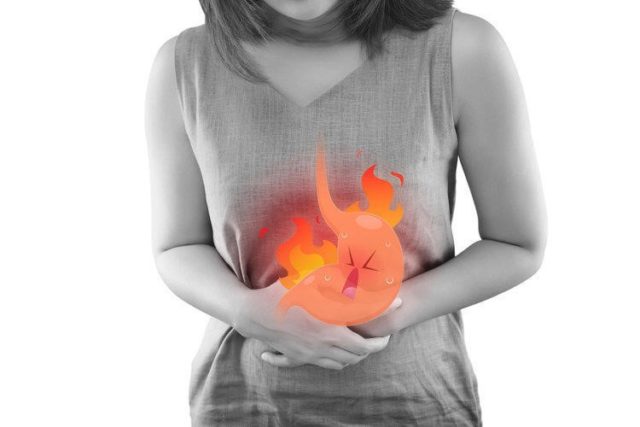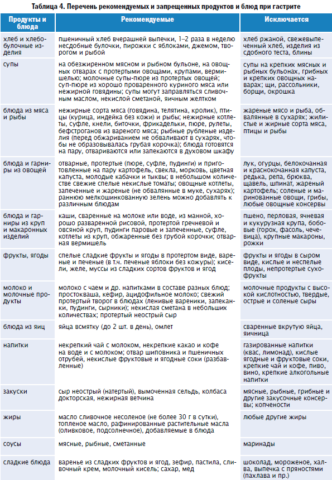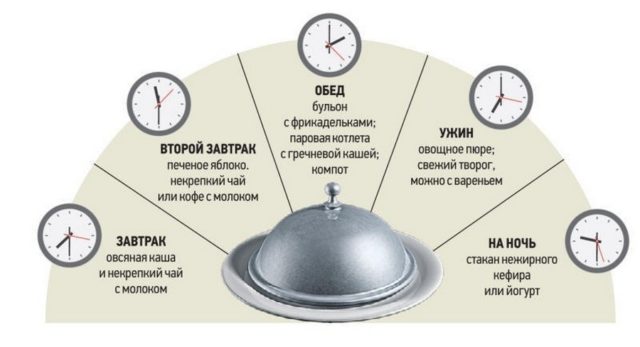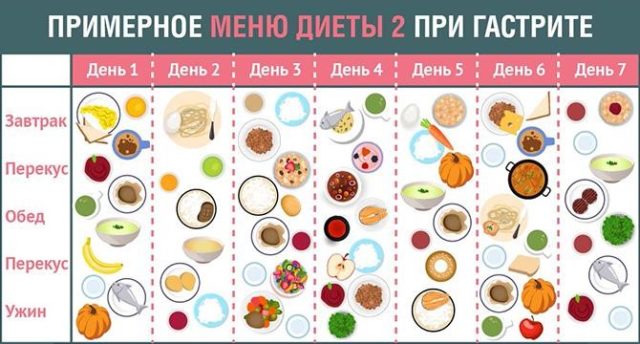Content
An often diagnosed ailment is gastritis with high acidity. With such a pathology, irritation and inflammation of the mucous tissues occurs, as well as a disorder of the secretory activity of the stomach. To make the treatment as effective as possible, it is worth adhering to the tips for proper nutrition. A diet for gastritis with high acidity implies refusal to eat food that irritates the gastric walls.
Nutritional features for gastritis with high acidity
Gastritis is usually understood as inflammation of the mucous tissues of the gastric cavity. Most often, its symptoms are attributed to an acute course. If we talk about the chronic nature of the disease, then there is a violation of the regenerative process of cells, there is a lack of the body's immune response to what is happening.
The reason for the development of the disease is most often an incorrectly selected diet. Abuse of fast foods, alcohol and processed foods is bad for the digestive tract. A concomitant factor is eating food on the run, lack of a full breakfast.
Acute gastritis often manifests itself against the background of infection of the gastric cavity with the bacterium Helicobacter pylori. The chronic form of the disease occurs when the wrong treatment is carried out and the diet is not followed.
This entire process leads to increased gastroesophageal reflux. It is accompanied by belching, regurgitation, nausea, heaviness in the abdomen, heartburn. The chronic form of the pathological process is characterized by periodic pain in the left side, upset stool, rumbling in the abdomen and bloating.

Since the cause of chronic gastritis with high acidity is often the consumption of food that irritates the mucous membrane, in the treatment, much attention is paid to the diet. It is especially important to adhere to a diet for gastritis with high acidity at the stage of exacerbation.
The main goal of a therapeutic diet for gastritis with high acidity is based on creating conditions that are aimed at eliminating unpleasant symptoms. A therapeutic diet allows you to reduce the secretion of gastric juice. The gentle regimen helps to improve the digestion and absorption of food.
Cooked meals are not allowed to be eaten hot or cold. If you do not adhere to this recommendation, then the gastric mucosa will not be able to recover and will be damaged again. Because of this, the symptoms will only intensify.
You need to eat every day at the same time. There must be breakfast, lunch and dinner. The intervals between meals should not exceed 2-3 hours.
Diet for acute gastritis with high acidity
Symptoms of gastritis with high acidity should be treated with medication and diet. In case of an acute course on the first day, it is recommended to completely refuse to eat.It is allowed to use a liquid - mineral or boiled water without gases. These activities allow you to get rid of nausea, pain and vomiting.
On the second day, the menu gradually includes slimy soups, jelly, rosehip broth and meat soufflé. For 3-4 days, it is allowed to eat white crackers or yesterday's bread, vegetable puree, meatballs, steamed cutlets, broth.
As soon as the symptoms disappear, the patient is transferred to table # 1.
Diet for chronic gastritis with high acidity
Nutrition for chronic gastritis of the stomach with high acidity depends on the stage. During the period of exacerbation, it is necessary to completely abandon food intake. The patient is put on a diet for gastritis with high acidity No. 1A. It implies a complete restriction of foods that can cause even the slightest irritation. The treatment lasts 6 to 10 days.

Table number 1 is recommended during the recovery period. Such rules can be adhered to with an unexpressed exacerbation. Food is characterized by moderate sparing of the gastric walls.
Diet menu for gastritis of the stomach with high acidity
The menu while dieting with gastritis with high acidity consists in the maximum exclusion of those foods that irritate the mucous tissues. Such a diet is not considered balanced, as the amount of protein, fat and carbohydrates is reduced to a minimum.
During the period of exacerbation, you should adhere to the dietary table number 1A. In this case, you must use:
- Slimy soups... They are cooked in water with the addition of oatmeal, semolina or rice groats. After cooking, they are filtered. You can add a little salt and add a piece of butter.
- Dishes from cereals... Porridge is carefully boiled, grind. Water dilution with milk is allowed.
- Milk products in the form of milk, calcined cottage cheese, cream, milk jelly.
- Eggs boiled and steamed omelet.
The patient at the stage of exacerbation needs to eat 6 times a day in small portions.
The diet for gastritis with high acidity No. 1A excludes the intake of rich broths, fresh bread, coarse cereals, fermented milk products, tough meats.
As soon as the symptoms subside, the patient is transferred to table 1B.
The menu includes:
- grated soups with oatmeal, semolina, buckwheat or rice groats with the addition of potatoes, carrots or beets;
- vegetable puree with milk or butter;
- white bread croutons;
- low-fat fish in the form of cod, pike, hake, pollock, blue whiting;
- dairy products - milk, cottage cheese, soups, jelly, cereals.
Gradually, the diet is expanded to diet number 1. Increase the intake of protein and carbohydrate foods. Mechanical or chemical irritation should not be allowed. You can eat meat in chunks. Dishes are baked, boiled or stewed. Food is taken 4 to 6 times a day.

Allowed Products
A diet for gastritis with high acidity consists in the use of:
- soups in vegetable broth with cereals, milk, grated meat;
- lean meats such as beef, chicken, rabbit and turkey;
- lean varieties of fish in the form of cutlets, meatballs, meatballs, skinless and boneless fish;
- porridge boiled to a viscous state on the water;
- vermicelli or thin noodles;
- vegetables in the form of potatoes, beets, carrots, young peas, cauliflower;
- yesterday's bread, crackers and biscuits;
- fermented milk products - yogurt, kefir, sour cream;
- dishes from cottage cheese - cheese cakes, puddings, dumplings;
- mild cheese in grated form;
- boiled eggs, steamed omelet.
It is allowed to eat desserts made from semolina and berries. Fruits are eaten baked. You can eat a little marshmallow, marshmallow and non-acidic jam. It is allowed to add honey to tea.
From drinks you can use jelly, compote, oatmeal broth, coffee or tea with the addition of milk.
Prohibited foods
Compliance with a diet for gastritis with high acidity of the stomach implies refusal from:
- vegetables - radish, radish, turnip, white cabbage, beans, sorrel, onion;
- products with skin, cartilage and veins;
- cabbage soup, concentrated broths, okroshka;
- fatty varieties of fish and meat, canned fish;
- some types of cereals - millet, yak, pearl barley;
- coarse pasta;
- vegetables in pickled, salted or pickled form;
- meat or tomato sauce, horseradish, mustard, pepper;
- animal or culinary fats, margarine;
- fresh and rye bread, muffins and puff pastry;
- fermented milk products with high acidity.
Sample menu for a week
During an exacerbation, it is necessary to spare the mucous membrane as much as possible. A diet for gastritis with high acidity is aimed at restoring the mucous membrane, eliminating symptoms and preventing re-irritation. Due to the numerous restrictions, the menu is monotonous, but gradually it can be expanded.

On the first day:
- In the morning - rice porridge with milk, boiled egg, weak black tea.
- For lunch - applesauce.
- At lunchtime - buckwheat and vegetable soup, steamed turkey cutlets, rosehip broth.
- For an afternoon snack - 2 pcs. biscuit, fruit jelly.
- For the evening - semolina porridge, baked fish, compote.
- Before going to bed - warm milk.
On the second day:
- For breakfast - steamed omelet, milk buckwheat porridge, green tea.
- For lunch - baked apples.
- At lunchtime - soup with oatmeal and grated vegetables, meatballs, mashed potatoes, compote.
- For an afternoon snack - low-fat cottage cheese, apricot juice.
- For the evening - stewed fish, carrot and pumpkin puree, herbal tea.
- Before going to bed - warm milk with the addition of 1 tsp. honey.
On the third day:
- For breakfast - semolina porridge with milk, low-fat cottage cheese, cocoa with cream.
- For lunch - baked pears.
- At lunchtime - soup on weak chicken broth with the addition of grated vegetables, turkey cutlets, jelly.
- For an afternoon snack - 2 biscuits, peach juice.
- For dinner - fish cutlets with sour cream, green pea puree, tea with honey.
- Before going to bed - a glass of milk.
On the fourth day:
- In the morning - milk rice porridge, rosehip broth.
- For lunch - a glass of warm milk.
- For lunch - milk soup, a casserole of lean meat and potatoes.
- For an afternoon snack - 2 crackers, jelly.
- For dinner - buckwheat porridge, banana, compote.
- Before going to bed - a glass of yogurt.
On the fifth day:
- In the morning - milk oatmeal, boiled egg, tea with sugar.
- For lunch - a baked apple.
- For lunch - puree soup with vegetables, steamed chicken cutlets, jelly.
- For an afternoon snack - a banana, a glass of natural yogurt.
- For the evening - cottage cheese casserole, rosehip broth.
- Before going to bed - chamomile tea.
On the sixth day:
- In the morning - pumpkin puree, green tea.
- For lunch - baked pear.
- At lunchtime - soup with noodles, chicken breast with low-fat sour cream, compote.
- For an afternoon snack - a glass of jelly.
- In the evening - steam omelet, compote.
- Before going to bed - a mug of warm milk.
On the seventh day:
- In the morning - semolina porridge with milk, 2 croutons, tea with sugar.
- For lunch - a slice of yesterday's bread with butter, a glass of milk.
- For lunch - boiled rice, meat patties, compote.
- For an afternoon snack - a glass of natural yogurt and 2 biscuits.
- In the evening - chicken roll, steamed omelet, jelly.
- Before going to bed - rosehip decoction.

After the condition has improved, various cooking techniques can be used. You can add a little butter to porridge. Vegetable purees can be seasoned with olive oil, and meat and fish can be used with sour cream.
For lunch or afternoon tea, it is allowed to eat desserts made from cottage cheese or semolina. It is recommended to add honey, a little sugar or jam to tea.
Conclusion
A diet for gastritis with high acidity allows you to quickly get rid of unpleasant symptoms. This type of nutrition is considered physiologically complete, provides moderate sparing of the digestive system, eliminates the inflammatory process and quickly restores the gastric mucosa. But, unfortunately, the diet quickly gets boring, as it is considered monotonous.
With increased acidity, it is important to adhere to all those recommendations that were given by the doctor. Failure to comply can not only lead to a deterioration in the condition, but also provoke the development of serious complications. In the early days, it is difficult to follow a diet, but gradually the body gets used to it.

